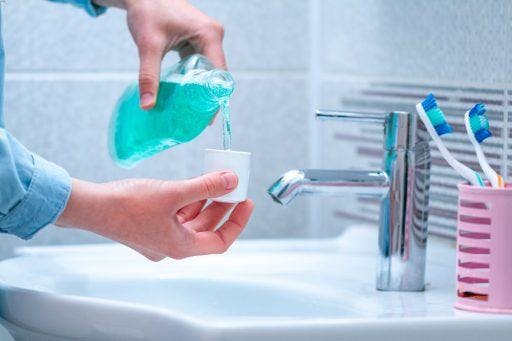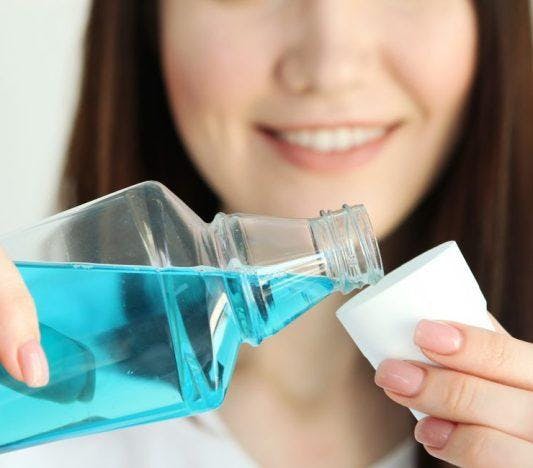How do you choose your mouthwash? With the oral health aisle stacked from top to bottom with so many different types, it’s easy to feel overwhelmed when deciding. But the key to finding the perfect mouth rinse lies in decoding the label. You have to look for active ingredients that target a wide range of oral issues, from bad breath to gum disease. Follow this guide to find out which substances you should seek.
Why You Should Use Mouthwash

For some people, their daily routine isn’t complete until they’ve finished their extensive oral hygiene routine, which includes a vigorous swish and gargle. Others can do without a mouth rinse after toothbrushing. Now, the question remains: is mouthwash good for you? And if so, is mouthwash safe to use every day? Consider what the experts have to say.
The American Dental Association (ADA) confirms that mouthwash can help reduce plaque, gingivitis, bad breath, and tooth decay. Additionally, rinsing your mouth can help keep it hydrated. Remember: a dry mouth can harbour bad breath-causing bacteria and alter your sense of taste.
However, the ADA cautions against using mouthwash as a replacement for regular toothbrushing and flossing. So, how often should you use it then? It depends on the product usage suggestion and your doctor’s prescription.
Consider also the ingredients. A study from the International Journal of Environmental Research and Public Health identified the composition of most mouthwashes on the market. The liquid solution can include alcohol, sugar, and additives, which doesn’t sound like a healthy formula! Take this as a warning to check the label and choose a product that aligns with your needs and preferences.
Types of Mouthwash
The ADA categorises mouthwash as cosmetic or therapeutic. Ask your doctor to help you decide which type to use, especially if you need to target any specific oral problem.
Cosmetic mouthwash
This type provides temporary relief for bad breath. Though it may have a pleasant taste and leave your mouth feeling fresh, cosmetic mouthwash doesn’t target specific concerns, like killing harmful bacteria.
Therapeutic mouthwash
In contrast, therapeutic mouthwashes contain active ingredients that address specific oral issues. Whether you’re dealing with bad breath, gingivitis, or tooth decay, this type can help prevent or alleviate the problem.
Therapeutic Mouthwash Ingredients to Seek

A study from the International Journal of Environmental Research and Public Health identified the active ingredients to look for on a mouthwash label. Read on for the complete list and the benefits of each:
- Cetylpyridinium chloride (CPC): Research by The National Center for Biotechnology Information named CPC as a mouthwash active ingredient that can prevent periodontal disease. This bacteria-busting agent can also rid your mouth of yeast and other viruses.
- Chlorhexidine (CHX): The same study identified CHX as another active ingredient effective in preventing gum disease. It’s also known as the “gold standard” anti-plaque agent that can fight bacteria, yeasts, and viruses in your mouth.
- Fluoride: The National Center for Biotechnology Information highlighted fluoride as an ingredient that can reduce dental caries and enhance enamel brilliance. This mineral has long been a common component in toothpaste and mouthwash, mainly due to its ability to protect teeth from decay.
- Peroxide: Though peroxide is a common ingredient associated with household cleaning products, it’s also a mouthwash component that can give you a brighter smile. The compound possesses oxidising chemicals that provide anti-microbial properties.
- Essential oils: These offer not only a pleasant flavour but also antibacterial properties. A word of caution: just because it’s an essential oil doesn’t make it safe to go into your mouth. Always check with your doctor before taking the DIY route.
How to Maximise the Effects of Your Mouthwash

Make the most out of your mouthwash by following these top rinsing tips:
- Keep your mouth closed and rinse vigorously.
- Check the product label for the recommended rinsing duration, typically 30 to 60 seconds.
- Use mouthwash twice a day or as prescribed by your doctor.
- Make sure your teeth are already clean before using mouthwash. Rinsing should never be a substitute for brushing and flossing.
- If you have open sores or oral lesions, consult your dentist before using a mouth rinse.
- Don’t swallow your mouthwash.
- Keep the product away from kids. The ADA advises against using mouthwash for children below six years old unless directed by a dentist.
- Avoid eating, drinking, or smoking at least 30 minutes after rinsing to avoid washing away the active ingredients.
- If you have braces, double down on using mouthwash to get rid of food particles trapped between wires and brackets. But if you’re undergoing aligner therapy with ClearCorrect, you can simply remove the appliances first and brush and rinse as usual.
Knowing exactly what’s in your mouth rinse will go a long way! So, ask your doctor to help you decide which ingredients to seek and which to avoid. Whether you’re looking to combat bad breath or brighten your teeth, there’s a mouthwash out there to meet your needs.
References:
Haas, A. N., Wagner, T. P., Muniz, F. W. M. G., Fiorini, T., Cavagni, J., & Celeste, R. K. (2016). Essential oils-containing mouthwashes for gingivitis and plaque: Meta-analyses and meta-regression. Journal of Dentistry, 55, 7–15.
Lynch, M. C., Cortelli, S. C., McGuire, J. A., Zhang, J., Ricci‐Nittel, D., Mordas, C. J., Aquino, D. R., & Cortelli, J. R. (2018). The effects of essential oil mouthrinses with or without alcohol on plaque and gingivitis: a randomized controlled clinical study. BMC Oral Health, 18(1).
Mouthrinse (Mouthwash). (n.d.). American Dental Association.
Radzki, D., Wilhelm-Węglarz, M., Pruska, K., Kusiak, A., & Ordyniec-Kwaśnica, I. (2022b). A fresh look at Mouthwashes—What is inside and what is it for? International Journal of Environmental Research and Public Health, 19(7), 3926.
Rajendiran, M., Trivedi, H. M., Chen, D., Gajendrareddy, P., & Chen, L. (2021). Recent development of active ingredients in mouthwashes and toothpastes for periodontal diseases. Molecules, 26(7), 2001.



